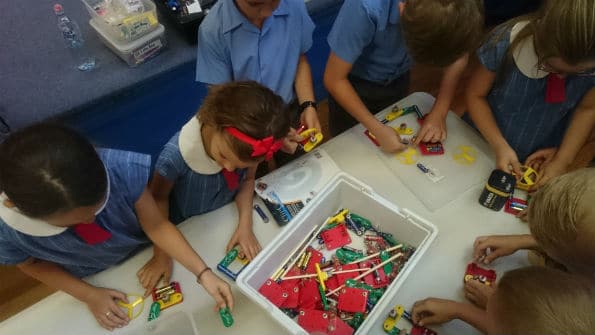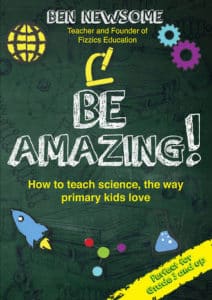
It’s all about creativity!
When it comes to teaching kids about the design process in the real world, nothing beats a STEAM lesson (Science, Technology, Engineering, Art & Mathematics all meshed together). Students love a project-based lesson where they can explore their creativity to solve challenges using materials in new and interesting ways. There are many ways to create a STEAM lesson, however, the best lessons often have a number of common components that make the students outcomes shine. Consider these steps as part of your next STEAM lesson planning!
1. The engineering design process should be prevalent.
The lesson doesn’t have to involve access to a fully equipped factory floor however in a high functioning STEAM lesson students should be able to use as many materials and tools at hand to be able to make their designs a reality. Not only should they have access to equipment they can safely operate, students should also be aware of the engineering design process (EDP). You’ll find variations of EDP’s on the internet but they more or less conform to the same steps;
– IDENTIFY the need & constraints
– RESEARCH the problem
– IMAGINE possible solutions
– PLAN steps for a given solution
– BUILD a prototype
– TEST & evaluate the prototype
– IMPROVE & redesign the prototype
Repeat the above steps as many times as possible until you solve the problem!

The Engineering design process made visual
2. Can the students creatively solve the challenge?

In other words, is the lesson open-ended to allow for student exploration of given materials to solve a given problem? Students should be able to explore multiple ways of finding a solution to the problem, with full acknowledgment that their initial prototypes may very well fail to work. Teach students to apply the engineering design process throughout their project. The STEAM lesson must be hands on, this is not just about the books or computing… it involves building materials!

Putting it together
3. Ideally, is there collaboration between students?
Student collaboration on STEAM projects is critical as it emulates what happens in real workplaces. Students need to learn how to work in an interdisciplinary team where each person brings different skill sets to the engineering design process. Perhaps part of your lesson could be to have students break into small groups where they assign different roles to project, with each member of their team having clear, reportable objectives to the group which will then presented to the rest of the class.

Working on circuits
4. Is the problem to be solved based in the real world?
Make it real! The more your STEAM lesson is geared towards a real-world problem, the more your students will appreciate the context of what you’re trying to achieve. Even better – what if the students create the end objective themselves? The objective doesn’t need to be a lofty goal (it could easily be a simple issue at school that the students could fix), as long as there is a real context that goes beyond assessment the students will be more motivated to make the solution happen

Building bridges!
5. How is mathematics and scientific theory incorporated into the lesson?
What is the Theory behind the design? How are the students measuring their results? Aim to embed maths and science into your lesson from the beginning. Students need to see that these subjects do not exist ‘in isolation’, maths is a tool to be used in every component of life and the scientific method is critical to finding the underlying laws of our Universe. A great STEM lesson addresses this by getting students to mesh disciplines together.

Weighing in!
6. Finally, what are the aesthetic components of the design?
The acronym STEAM includes an artistic component… so get your students to include this as well! Great design is essential when building a product that people will love, something which the late Steve Jobs of Apple was definitely acutely aware of. Besides which, it’s fun to get creative

Making the design appealing
Happy teaching,
Ben Newsome.
Find out about STEM Pd offered by Fizzics Education
Want more free science experiments?
NEW Primary science teaching book!
“Be Amazing! How to teach science, the way primary kids love”




























Comments